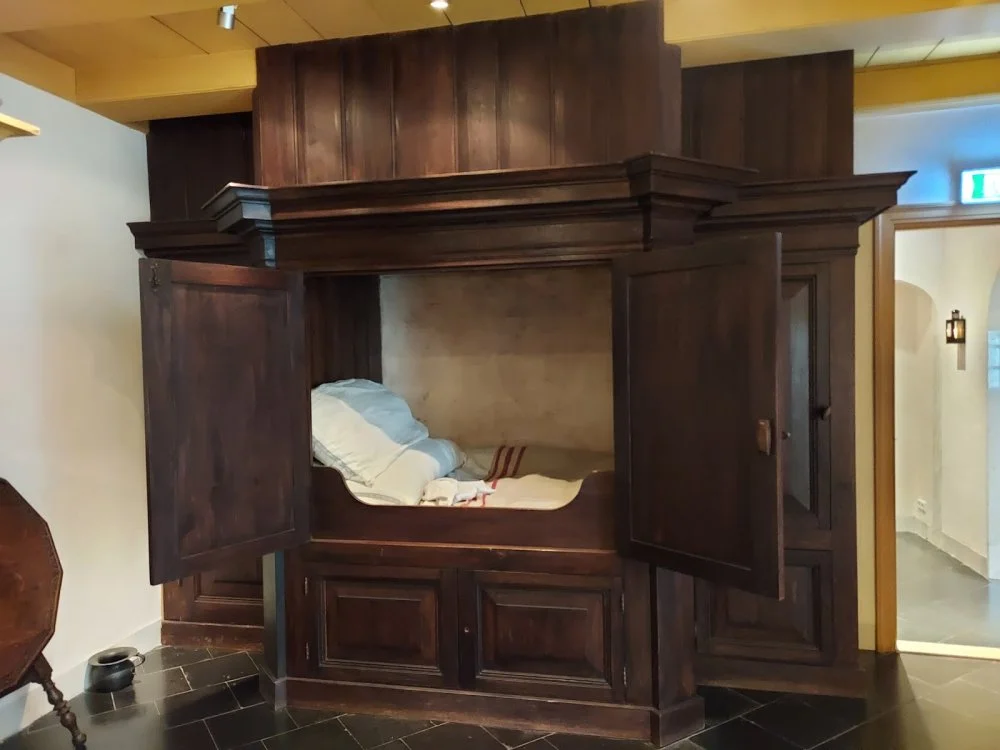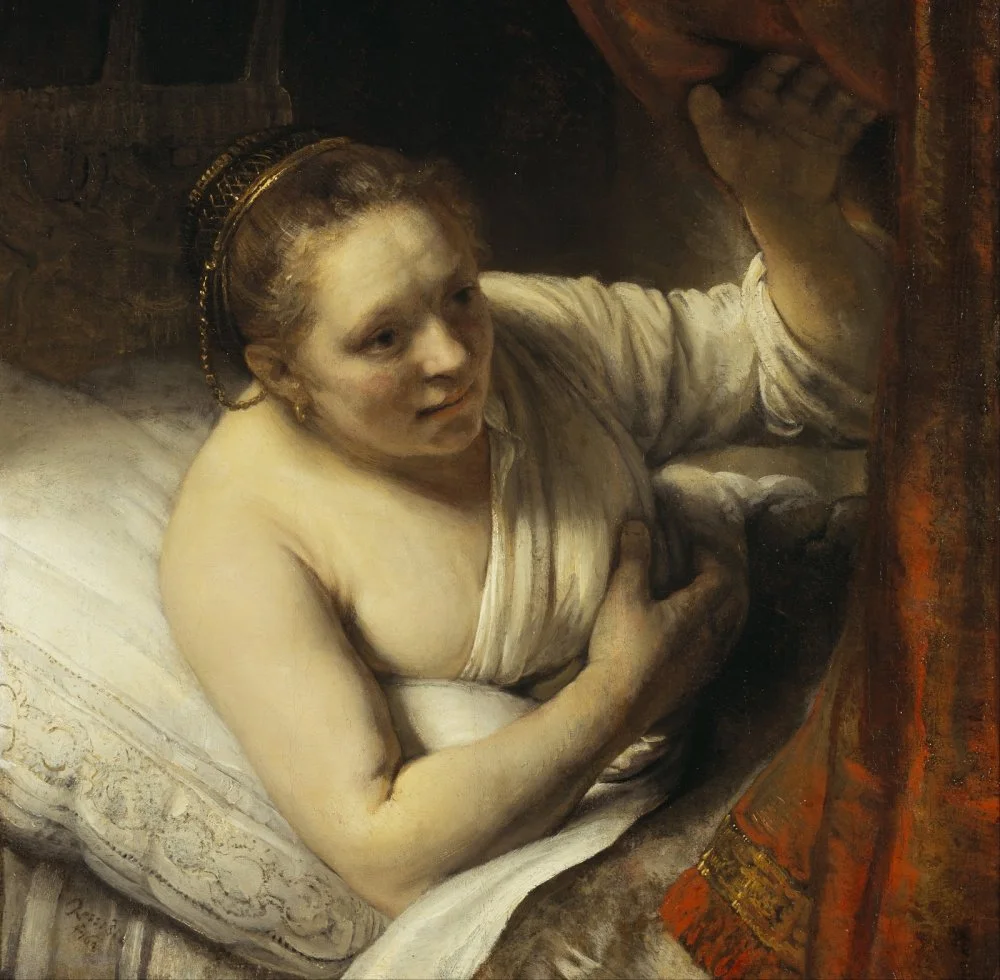The Amsterdam home of the great artist Rembrandt (1606–69) , where he spent twenty years of his life, is now a museum. In addition to seeing paintings by both him and his contemporaries, you can also view the artist’s household utensils, either preserved or restored. Visitors can see that the painter literally slept in a closet, on an alcove bed that would have been too small even for a child.
To stretch out comfortably on such a bed, the artist had to be no taller than 140 centimeters. However, according to his contemporaries, Rembrandt was a well-built man of medium height.
The size of the bed is explained by the fact that until almost the beginning of the nineteenth century, in the Netherlands, and in some parts of France, it was considered unhealthy to sleep lying down. Peasants, soldiers, and the poor slept that way, but the respectable public often followed doctors’ recommendations to sleep in a half-sitting position. It was believed that such a position improved digestion, was good for the lungs, and did not allow the ‘bad juices’ to fill the head during sleep. Even large beds had special high headboards covered with pillows to keep the shoulders and head elevated.

Rembrandt's Box bed at museum Rembrandthuis in Amsterdam/Wikimedia Commons
The closet-like form of the alcove is specific to Holland. For example, in August 1697, the Russian tsar Peter the Great, who was learning the skills of a shipwright in the Dutch town of Zaandam, stayed with his friend Master Gerrit Kist. He apparently slept in a cabinet that can still be seen today in his home—the oldest preserved wooden house in Holland—even though Peter was 2 meters 4 centimeters tall. The tsar ordered such a cabinet to be installed in his house in St. Petersburg, which was under construction at the time—and the cabinet is still there.
The inhabitants of Holland, a very wet country, believed that a closed bed kept out the damp and harmful ‘miasmas’ that flowed from the canals at night. It also provided privacy and kept rodents out.
Rembrandt clearly loved his bed and took pains to reproduce it accurately in the canvas Sarah Waiting for Tobias.

Rembrandt. Sarah Waiting for Tobias. 1645/Wikimedia Commons
